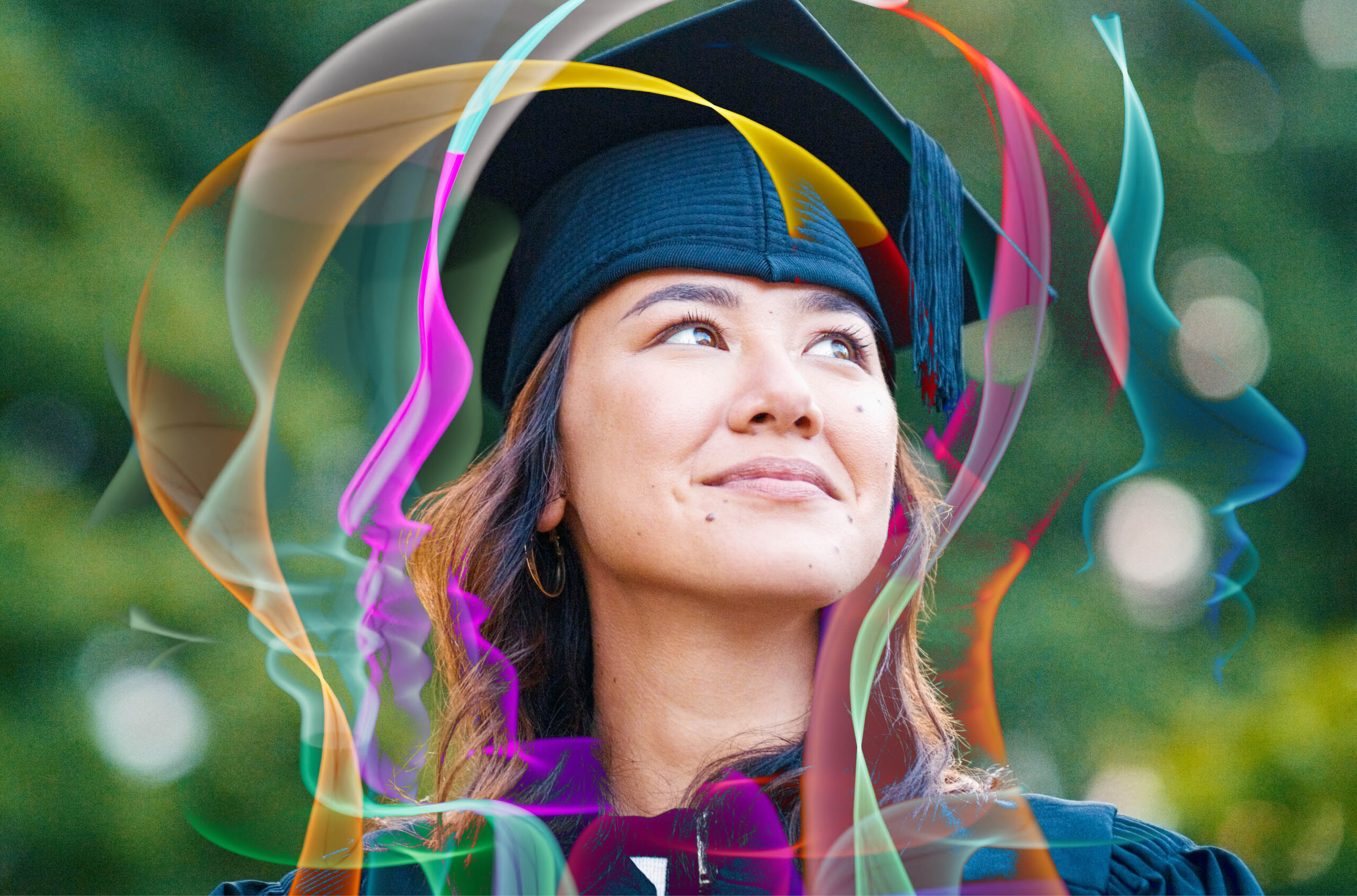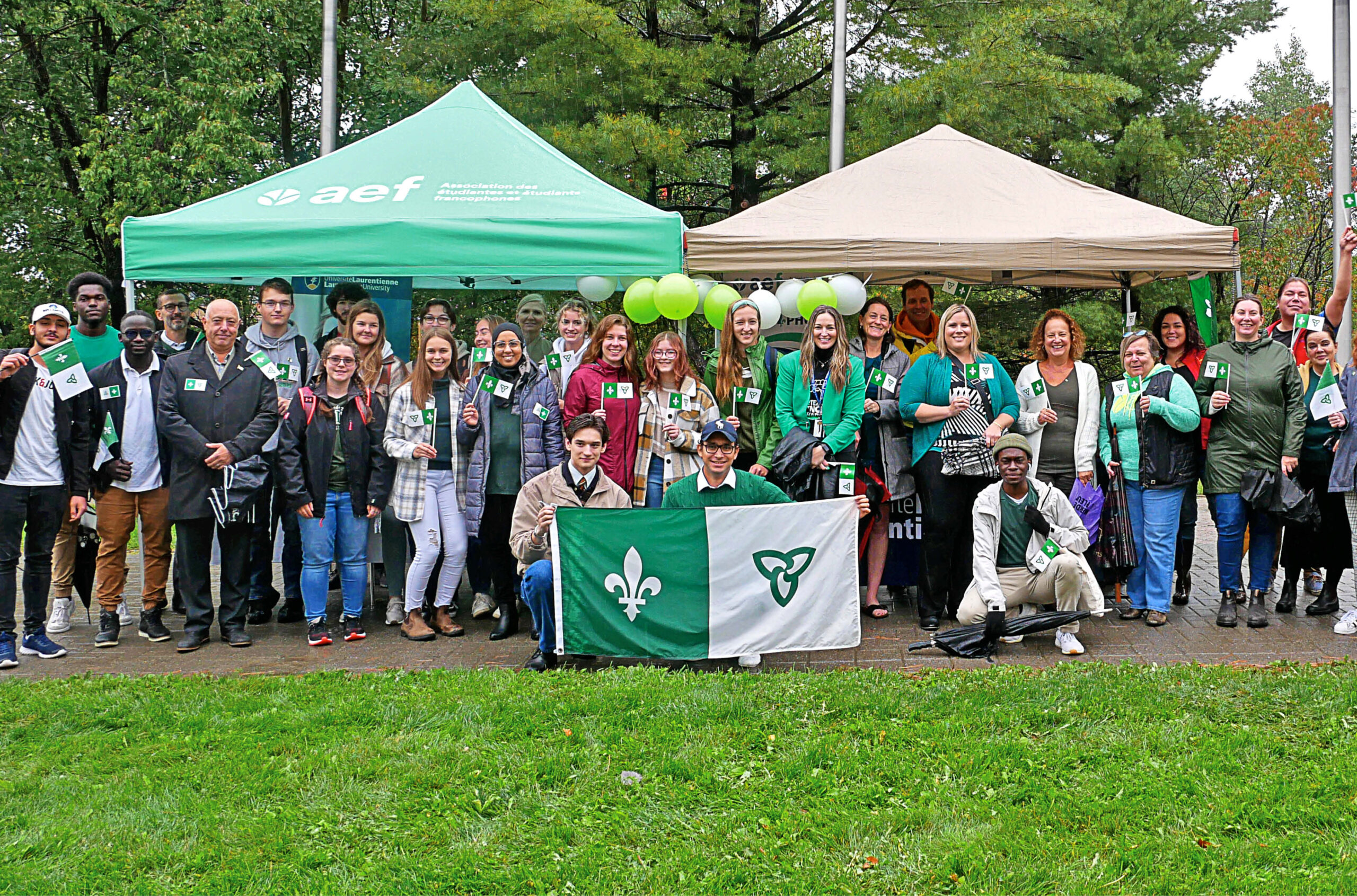University of Calgary researcher part of team studying fossilized dinosaur egg
The perfectly preserved specimen is currently housed at the Yingliang Stone Nature History Museum in China.

What does a dinosaur embryo look like just before hatching? That was an unanswered question until December 2021 when a team of international scientists published a paper describing a startling find: a fossilized egg, discovered in southern China, containing the perfectly preserved embryonic skeleton of an oviraptorid dinosaur. Estimated to be between 66 million and 72 million years old, the fossilized embryo has been dubbed Baby Yingliang after the museum that now houses it.
Baby dinosaur bones are small and fragile and rarely preserved as fossils, making this a very fortunate find, said Darla Zelenitsky, an associate professor in the department of geoscience at the University of Calgary, who was part of the team assembled to study the embryo. She suspects this relic survived in such a remarkably intact state because it was buried quickly by a flood, protecting it from scavengers.
Incredibly, the fossilized egg was unearthed in 2000 during the construction of an industrial park in Jiangxi province in southern China but ended up in storage and was forgotten until about 15 years later, when the curator of the Yingliang Stone Nature History Museum made a chance discovery. After he noticed some bones on the broken section of an egg, he arranged for fossil preparation – a process that involves removing the rocky matrix surrounding the bones, scraping off part of the eggshell and cleaning the fossil. This revealed the embryo’s full skeleton.

A world authority on dinosaur eggs, Dr. Zelenitsky recalled her surprise when she first locked eyes on the specimen. “I was completely stunned. I couldn’t believe my eyes. I had never seen anything like it and I’ve been studying dinosaur egg fossils for 25 years. You can see the embryo perfectly curled with all its bones in place from the tip of its snout to the end of its tail. It looks as though the animal died just yesterday.”
The embryo, which measures 27 cm long and lies curled inside a 17 cm-long egg, has been identified as an oviraptorosaur, a two-legged, feather-covered dinosaur with a short parrot-like skull that lived in the late Cretaceous period, between 66 and 100 million years ago. Oviraptorosaurs could range from the size of a turkey to eight metres and 2,000 kilograms. As an adult, this one would have stood about two metres tall.
In addition to the fossil’s exquisite state of preservation, the find is significant because it reveals a surprising connection between the hatching behaviour of dinosaurs and modern birds. “Up until now, little has been known of what was going on inside a dinosaur’s egg prior to hatching, as there are so few embryonic skeletons, particularly those that are complete and preserved in a life pose. This fossil gives us a rare glimpse of how the embryo was positioned in the egg just before hatching,” noted Dr. Zelenitsky.
The tucking posture of Baby Yingliang appears similar to a 17-day-old chicken embryo in preparation for hatching on day 21. “Its head rests on its abdomen, the legs are flexed with the knees on its chest and the feet on either side of the head. Its back is facing the broad end of the egg,” said Dr. Zelenitsky.
Modern birds assume this posture just before hatching to help stabilize and direct the head, when the bird is cracking the eggshell using its beak. But this positioning had never been observed before in dinosaurs and it suggests that the modern birds’ pre-hatching tucking behaviour could have first evolved among non-avian theropods during the Cretaceous.
This pre-hatching movement isn’t the only characteristic that modern birds inherited from their dinosaur ancestors. Oviraptorosaurs are also known to have sat atop their eggs to incubate them. “There’s been a number of skeletons of oviraptorid adults sitting directly on their eggs,” said Zelenitsky. “Brooding behaviour is another trait that preceded birds.”
Dr. Zelenitsky remains hopeful that other examples of fossilized eggs containing intact embryos may be uncovered in the future. “If we can find other dinosaur embryos we might be able to see what they were doing inside the egg before hatching. At the moment, we still don’t know when this bird-like posture evolved.”
Meanwhile, researchers say that they will continue to study the fossil in more depth using various imaging techniques to gain insight into its internal anatomy, such as skull bones, and other body parts still covered in rock. It’s possible that Baby Liangyiang may have more secrets to reveal.
Featured Jobs
- Business – Lecturer or Assistant Professor, 2-year term (Strategic Management) McMaster University
- Psychology - Assistant Professor (Speech-Language Pathology)University of Victoria
- Veterinary Medicine - Faculty Position (Large Animal Internal Medicine) University of Saskatchewan
- Canada Excellence Research Chair in Computational Social Science, AI, and Democracy (Associate or Full Professor)McGill University
- Education - (2) Assistant or Associate Professors, Teaching Scholars (Educational Leadership)Western University
















Post a comment
University Affairs moderates all comments according to the following guidelines. If approved, comments generally appear within one business day. We may republish particularly insightful remarks in our print edition or elsewhere.